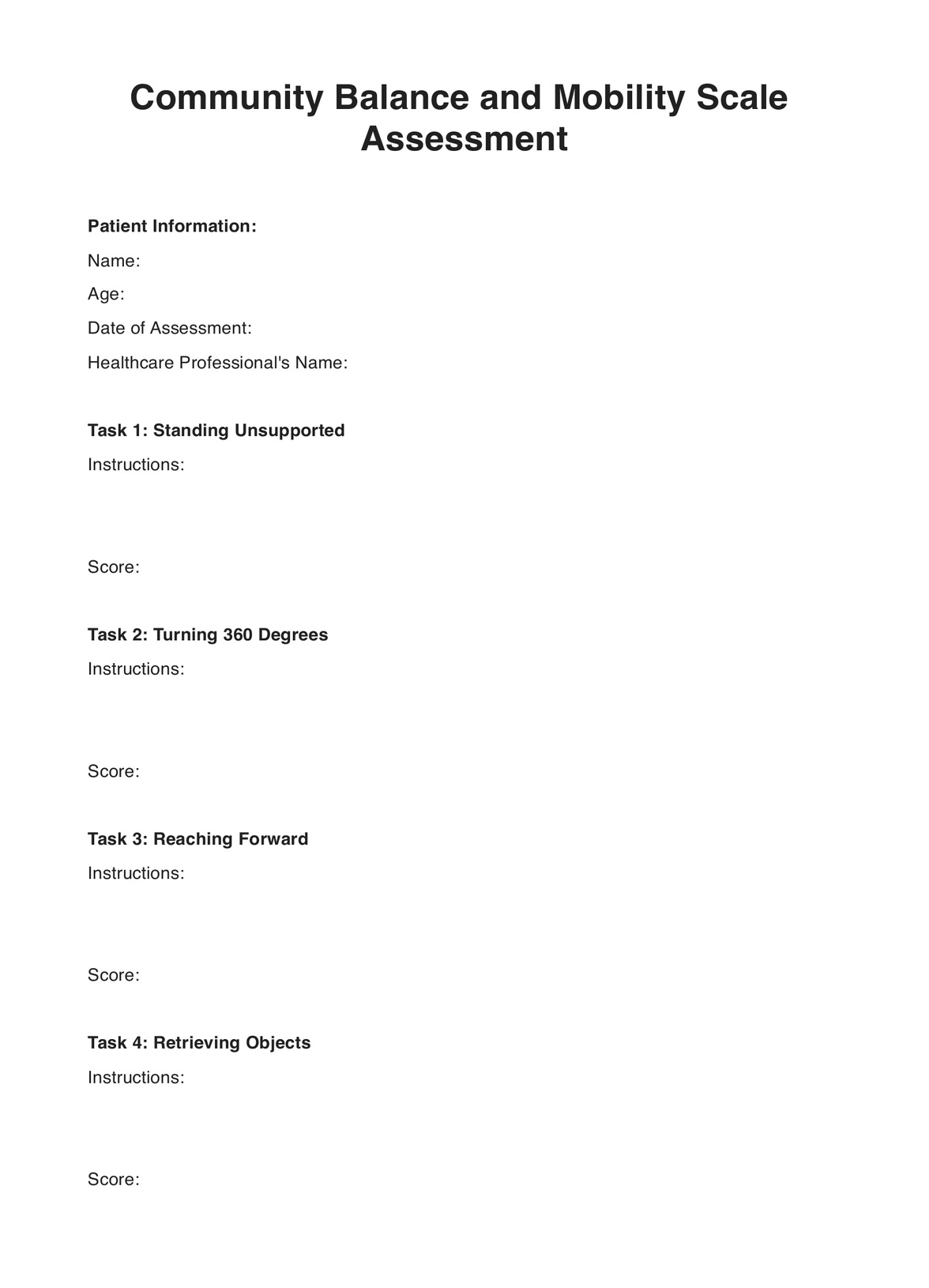The Community Balance and Mobility Scale (CB&M) is primarily used by healthcare professionals, including physical therapists, occupational therapists, and neurologists. They utilize the scale to assess balance and mobility in individuals with neurological conditions, such as stroke survivors or traumatic brain injuries.

Community Balance and Mobility Scale
Assess balance and mobility with the Community Balance and Mobility Scale. A reliable tool used by healthcare professionals for neurological conditions.
Community Balance and Mobility Scale Template
Commonly asked questions
The CB&M Scale is used when evaluating individuals with neurological conditions who experience balance and mobility impairments. It is particularly relevant during neurorehabilitation programs, stroke recovery, fall risk assessment, and long-term care planning.
The CB&M Scale assesses functional abilities related to balance and mobility in real-world scenarios. Healthcare professionals observe and score patients as they perform tasks simulating everyday challenges faced in their communities. The scale provides objective data, enabling practitioners to design personalized intervention plans and track patients' progress.
EHR and practice management software
Get started for free
*No credit card required
Free
$0/usd
Unlimited clients
Telehealth
1GB of storage
Client portal text
Automated billing and online payments











